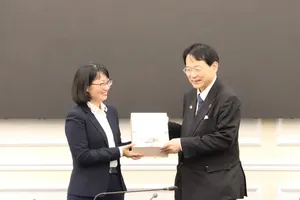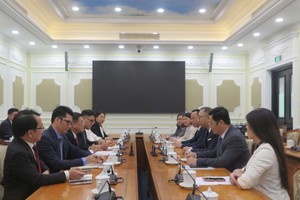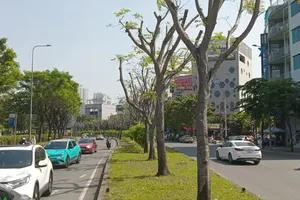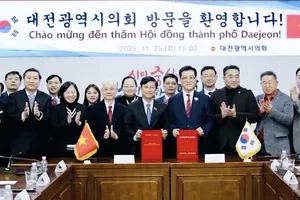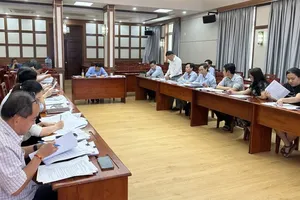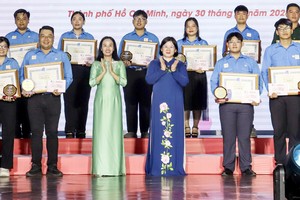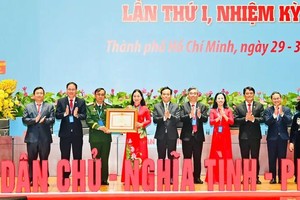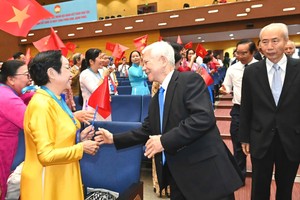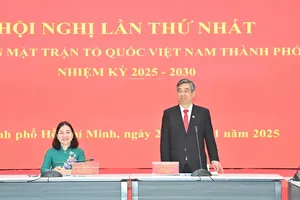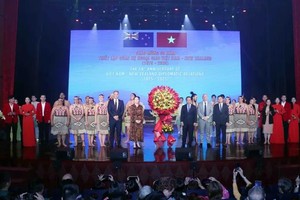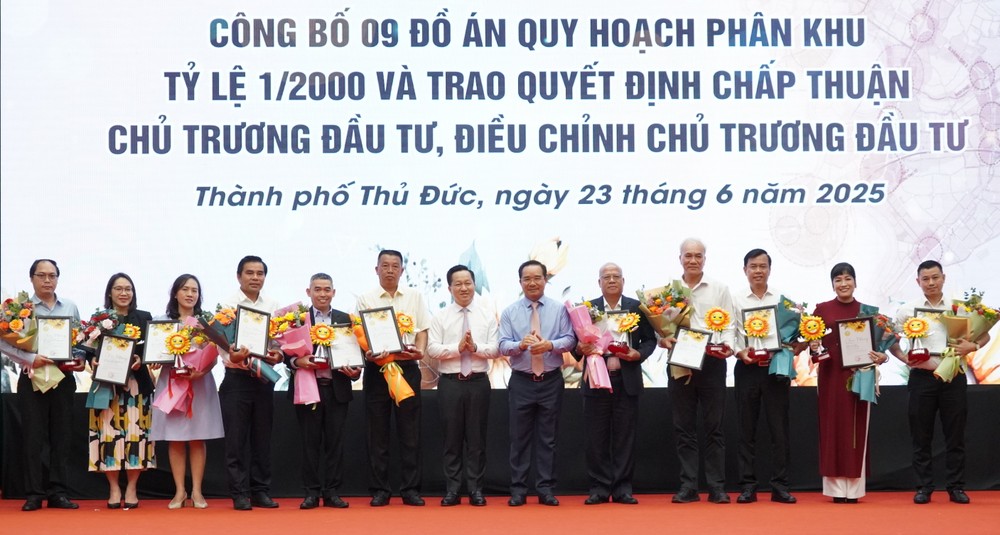
Mr. Nguyen Van Duoc, Member of the Party Central Committee, Deputy Secretary of the HCMC Party Committee, and Chairman of the HCMC People's Committee, attended the event and delivered remarks.
In his speech, Mr. Hoang Tung, Chairman of the Thu Duc City People's Committee, emphasized that the nine zoning plans — covering 11 priority development zones — are crucial legal and strategic foundations to attract both domestic and international investment. These plans also set the direction for the city's development under a new two-tier governance model, focusing on key sectors including services, education, finance, high-tech industries, logistics, seaports, and innovation — all closely integrated with the Southeast region, with the Thu Thiem International Financial Center as a focal point.
Starting July 1, the 12 newly established wards in Thu Duc City will work closely with HCMC’s departments and agencies to formulate comprehensive 1:500-scale detailed plans. These will pave the way for a policy to waive building permits for individual houses, expected to be piloted from January 1, 2026.
At the same event, 17 investors were granted investment policy decisions for residential development projects across the city in the first half of 2025, with total registered capital exceeding VND54 trillion.
Chairman Nguyen Van Duoc of the HCMC People's Committee underscored the importance of the nine newly announced zoning plans in shaping the future of urban development in Thu Duc City. He reaffirmed the city's pivotal role in both the current HCMC structure and the forthcoming “New HCMC,” describing Thu Duc as a special city within the metropolis.
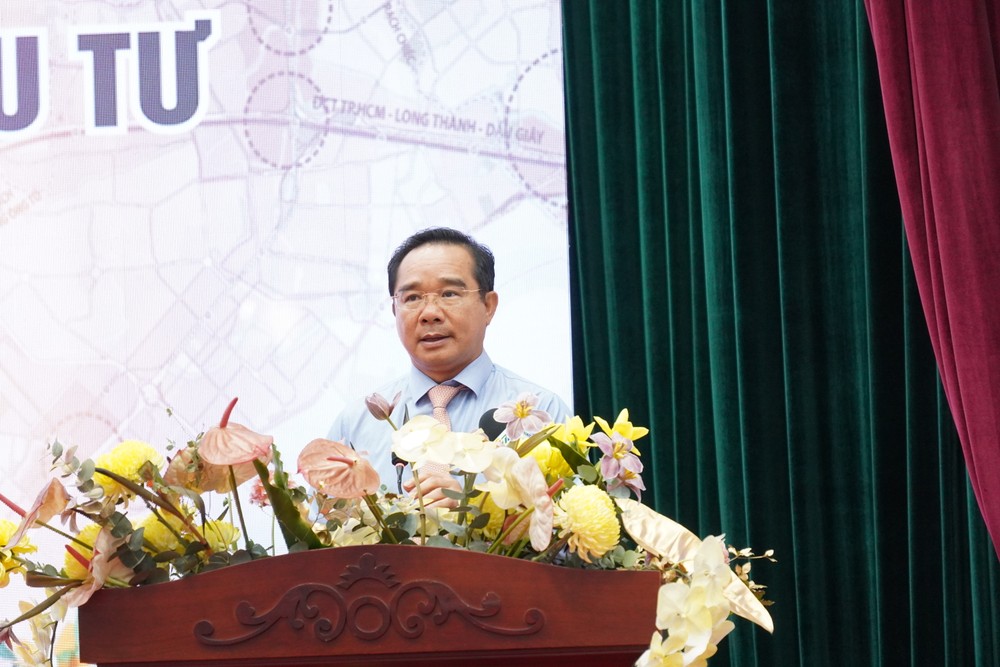
Outlining HCMC’s “1-4-1” development strategy — which includes synchronized modern infrastructure (comprising physical, transport, and digital infrastructure), semiconductor and AI industries, big data, innovation, and the goal of becoming a high-quality hub for education and healthcare — Chairman Nguyen Van Duoc noted that many elements of this strategy will be implemented in Thu Duc.
He also welcomed investors who have chosen to base their operations and lives in HCMC and Thu Duc, and encouraged them to contribute to the city's ongoing development.
From July 1, Thu Duc City — along with other localities nationwide — will officially transition to a two-tier local government structure. The HCMC Chairman stressed that this marks not an end, but the beginning of a new chapter in the city’s journey toward modern urban governance. He expressed hope that the publication of the nine zoning plans would trigger a breakthrough in the city’s growth in the near future.
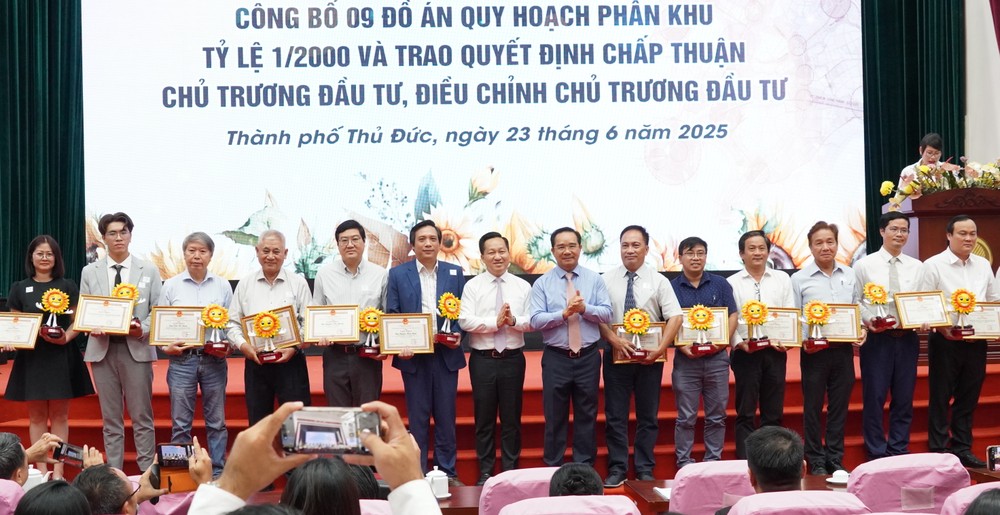
Key highlights of the nine 1:2000-scale sub-zoning plans
Zone 1 covers Thu Thiem, An Loi Dong, Thao Dien, and parts of An Khanh and An Phu wards, with a total area of 1,807 ha and a population of 332,500 residents. Its main development orientation is the Thu Thiem International Financial Center.
Zone 2 covers Hiep Binh Chanh and parts of Linh Dong, Truong Tho, Hiep Binh Phuoc, Tam Phu, and Tam Binh wards, with a total area of 2,042 ha and a population of 270,000 residents. Its main development orientation is the Truong Tho New Urban Center.
Zone 3 encompasses Linh Tay, Linh Chieu, Binh Tho, Linh Trung, Binh Chieu, Linh Xuan, and parts of Tam Binh, Tam Phu, Linh Dong, Truong Tho, and Hiep Binh Phuoc, covering a total of 2,468 ha and housing 440,000 residents. Its primary development focus is to support the expansion of Vietnam National University HCMC.
Zone 4 covers Long Binh and parts of Tan Phu and Long Thanh My wards, with a total area of 2,945 ha and a population of 280,442 residents. The zone is envisioned as a historical and cultural park, featuring public green spaces, themed parks, and integrated eco-tourism.
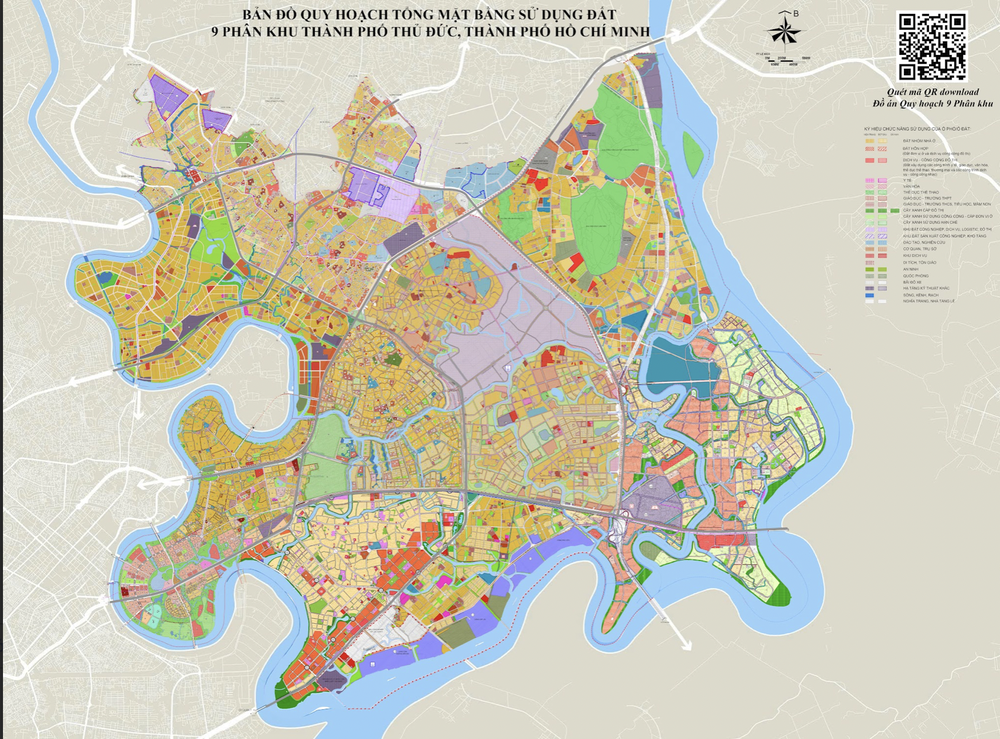
Zone 5 includes Long Phuoc and parts of Truong Thanh and Long Truong wards, spanning 3,425 ha and home to 210,000 residents. Its development orientation is to become an intellectual urban district anchored by research institutes and specialized training centers.
Zone 6 covers parts of Thanh My Loi, Cat Lai, Binh Trung Dong, and Phu Huu wards, with a total area of 1,587 ha and a projected population of 127,500 residents. It is designated as HCMC’s key hub for port services, industrial activities, and logistics.
Zone 7 comprises Binh Trung Tay and parts of An Khanh, An Phu, Phu Huu, Binh Trung Dong, Cat Lai, Phuoc Long B, and Thanh My Loi wards, with a total area of 1,748 ha and a population of 300,000 residents. The zone aims to develop into a multifunctional urban corridor along the HCMC–Long Thanh–Dau Giay Expressway and Vo Chi Cong Street.
Zone 8 spans Phuoc Long A, Phuoc Long B, Phuoc Binh, and parts of An Phu, Tang Nhon Phu B, and Phu Huu wards, covering 1,195 ha with 248,000 residents. It is anchored by the Rach Chiec National Sports Complex and is designated for public parks and service-based urban development, serving as one of HCMC’s growth engines.
Zone 9 covers Hiep Phu, Tang Nhon Phu A and B, and parts of Phuoc Long B, Tan Phu, Long Thanh My, Truong Thanh, Long Truong, and Phu Huu wards, with a total area of 2,222 ha and a population of 345,000 residents. Its main focus is the redevelopment and enhancement of existing residential neighborhoods, alongside the development of multifunctional complexes along key transit corridors linked to the city’s public transportation network.

